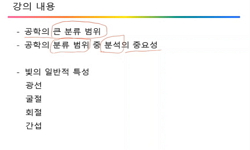사람뼈는 키, 성별, 나이, 인종 등에 대한 정보를 제공하며 개인 식별을 가능하게 한다. 이 중 성별추정은 기본적이며 필수적인 일로서 육안적 비계측 성별추정은 전문가의 지식과 경험으로 ...
http://chineseinput.net/에서 pinyin(병음)방식으로 중국어를 변환할 수 있습니다.
변환된 중국어를 복사하여 사용하시면 됩니다.
- 中文 을 입력하시려면 zhongwen을 입력하시고 space를누르시면됩니다.
- 北京 을 입력하시려면 beijing을 입력하시고 space를 누르시면 됩니다.

조선시대 사람 볼기뼈에 대한 DSP2 프로그램을 활용한 성별추정 평가 = Evaluation through the Use of DSP2 Program for Sex Estimation by Measuring Human Hip Bones in a Joseon Dynasty Bone Collection
한글로보기https://www.riss.kr/link?id=A108076077
- 저자
- 발행기관
- 학술지명
- 권호사항
-
발행연도
2022
-
작성언어
Korean
-
주제어
Joseon Dynasty ; Sex estimation ; Hip bone ; DSP2 ; Non-metric ; Metric ; 조선시대 ; 성별추정 ; 볼기뼈 ; DSP2 ; 비계측 ; 계측
-
등재정보
KCI등재
-
자료형태
학술저널
-
수록면
9-19(11쪽)
-
KCI 피인용횟수
0
- 제공처
-
0
상세조회 -
0
다운로드
부가정보
국문 초록 (Abstract)
사람뼈는 키, 성별, 나이, 인종 등에 대한 정보를 제공하며 개인 식별을 가능하게 한다. 이 중 성별추정은 기본적이며 필수적인 일로서 육안적 비계측 성별추정은 전문가의 지식과 경험으로 대개 추정한다. 하지만, 경험이 부족한 신진 연구자 등은 성별추정에 혼란이나 실수가 발생할 수 있다. 따라서, 비전문가라도 객관적이고 일관되게 성별추정 결과를 쉽게 얻을 방법이 필요하다. 12개 인구 표본에서 2,000명 이상의 알려진 성별에 대한 자료를 기반으로 만든 확률적 성별추정 (Diagnosis Sexuelle probabiliste, DSP2) 프로그램은 10개의 볼기뼈 계측지표를 입력하면 성별추정이 되어 간단하고 객관적이다. 하지만, 아직 한국인에서 성별추정 (DSP2) 프로그램을 사용해 어느 정도 일치하는지는 잘 알려지지 않았다. 본 연구는 조선시대 사람 볼기뼈에 대해 DSP2 프로그램으로 성별추정을 했을 때, 전문가의 육안적 성별추정 결과와 얼마나 일치하는지를 비교하여 평가하고자 하였다. 먼저 전문 고병리 연구자 3인이맹검법으로 조선시대 사람뼈 컬렉션에서 보존상태가 온전한 15개체 (n=29)를 무작위로 선정하여 육안적 비계측 성별추정을 시행하였다. 15개의 개체에 대해 남자 9명, 여자 6명으로 모두 일치하는 성별추정 결과를 얻었다. 이 결과를 기준으로 계측한 계측계수들을 DSP2 프로그램에 입력하여 결정된 성별추정 결과를 평가하였다. DSP2 프로그램에 볼기뼈에서 계측한 10개의 계측지표 값을 모두 입력한 성별추정 결과는 86.2%, 권장되는 8개의 계측지표 값을 입력한 결과는 89.66%, 핵심 4개 계측지표 값을 입력한 결과는 85%였다. 부가적 4개 계측지표 값을 입력한 결과 29개볼기뼈에서 9개체만 성별추정 결과는 31.03% 로 성별추정 비율이 가장 낮았다. 10개의 계측지표를 사용했을 때와성별추정 결과를 비교했을 때, 권장되는 8개의 계측지표, 핵심 4개 계측지표, 부가적 4개 계측지표의 일치율은 각각86.2%, 80%, 31.03%로 산정되었다. DSP2 프로그램은 한국인 볼기뼈를 통한 성별추정에 10개 계측지표를 사용했을때, 높은 정확도를 보이는 프로그램으로 평가되었다. 하지만, 사용한 볼기뼈 개체수가 일반화 하기에는 충분하지 않으므로 향후 더 많은 개체수로 추가적인 연구를 진행한다면 DSP2 프로그램에 대한 더 정확한 평가가 가능할 것이다.
참고문헌 (Reference)
1 Bruzek J, "forensic anthropology and medicine" umana Press 225-242, 2006
2 Brůžek J, "Validation and reliability of the sex estimation of the human os coxae using freely available DSP2 software for bioarchaeology and forensic anthropology" 164 : 440-449, 2017
3 Kallenberger L, "Using CRANID to test the population affinity of known crania" 221 : 459-464, 2012
4 Kemkes-Grottenthaler A., "The reliability of forensic osteology - a case in point. Case study" 117 : 65-72, 2001
5 Hager LD, "The evolution of sex differences in the hominid bony pelvis" University of California 1989
6 Keyser C, "The ancient Yakuts : a population genetic enigma" 370 : 20130385-, 2015
7 Krogman WM, "The Human Skeleton in Forensic Medicine" Charles C Thomas Publisher 1986
8 Noe-Nygaard N, "Taphonomy in Archaeology" 6 : 7-52, 1987
9 Kranioti EF, "Sexual dimorphism of the tibia in contemporary Greeks, Italians, and Spanish : forensic implications" 129 : 357-363, 2015
10 Kranioti EF, "Sex estimation of the Greek mandible with the aid of discriminant function analysis and posterior probabilities" 22 : 101-104, 2014
1 Bruzek J, "forensic anthropology and medicine" umana Press 225-242, 2006
2 Brůžek J, "Validation and reliability of the sex estimation of the human os coxae using freely available DSP2 software for bioarchaeology and forensic anthropology" 164 : 440-449, 2017
3 Kallenberger L, "Using CRANID to test the population affinity of known crania" 221 : 459-464, 2012
4 Kemkes-Grottenthaler A., "The reliability of forensic osteology - a case in point. Case study" 117 : 65-72, 2001
5 Hager LD, "The evolution of sex differences in the hominid bony pelvis" University of California 1989
6 Keyser C, "The ancient Yakuts : a population genetic enigma" 370 : 20130385-, 2015
7 Krogman WM, "The Human Skeleton in Forensic Medicine" Charles C Thomas Publisher 1986
8 Noe-Nygaard N, "Taphonomy in Archaeology" 6 : 7-52, 1987
9 Kranioti EF, "Sexual dimorphism of the tibia in contemporary Greeks, Italians, and Spanish : forensic implications" 129 : 357-363, 2015
10 Kranioti EF, "Sex estimation of the Greek mandible with the aid of discriminant function analysis and posterior probabilities" 22 : 101-104, 2014
11 Chapman T, "Sex determination using the Probabilistic Sex Diagnosis(DSP : Diagnose Sexuelle Probabiliste)tool in a virtual environment" 234 : 189-, 2014
12 Quatrehomme G, "Sex determination using the DSP(probabilistic sex diagnosis)method on the coxal bone : Efficiency of method according to number of available variables" 272 : 190-193, 2017
13 Passalacqua NV, "Sex determination of human skeletal populations using latent profile analysis" 151 : 538-543, 2013
14 Alunni-Perret V, "Reexamination of a measurement for sexual determination using the supero-inferior femoral neck diameter in a modern European population" 48 : 517-520, 2003
15 Oelze VM, "Multi-isotopic analysis reveals individual mobility and diet at the Early Iron Age monumental tumulus of Magdalenenberg, Germany" 148 : 406-421, 2012
16 Vacca E, "Metric characterization of the human coxal bone on a recent Italian sample and multivariate discriminant analysis to determine sex" 222 : 401-, 2012
17 Bruzek J, "Inter-and intraobserver error in pelvic measurements and its implication for the methods of sex determination" 32 : 215-223, 1994
18 Villotte S, "In situ study of the Gravettian individual from Cussac cave, locus 2(Dordogne, France)" 158 : 759-768, 2015
19 Sládek V, "Human manipulative behavior in the Central European Late Eneolithic and Early Bronze Age : humeral bilateral asymmetry" 133 : 669-681, 2007
20 Candelas González N, "Geometric morphometrics reveals restrictions on the shape of the female os coxae" 230 : 66-74, 2017
21 Gaillard, J, "Determination sexuelle d’un os coxal fragmentaire" 1-2 : 255-267, 1960
22 Schulter-Ellis FP, "Determination of sex with a discriminant analysis of new pelvic bone measurements : Part I" 28 : 169-180, 1983
23 Murail P, "DSP : a tool for probabilistic sex diagnosis using worldwide variability in hip-bone measurements" 17 : 167-176, 2005
24 Quintelier, K., "Calcified uterine leiomyomata from a postmedieval nunnery in Brussels, Belgium" 19 : 436-442, 2009
25 Rosenberg K, "Birth, obstetrics and human evolution" 109 : 1199-1206, 2002
26 Thomas A, "Bioarchaeology of the middle Neolithic : evidence for archery among early European farmers" 154 : 279-290, 2014
27 Buikstra JE, "Arkansas Archaeological Survey Research Series vol. 44" Arkansas Archeological Survey 1994
28 Scheuer L, "Application of osteology to forensic medicine" 15 : 297-312, 2002
29 Bräuer G., "Anthropologie. Handbuch der vergleichenden biologie des menschen, Band 1" Gustav Fischer Verlag 160-232, 1988
30 Guyomarc’h P, "Accuracy and reliability in sex determination from skulls: A comparison of Fordisc® 3.0and the discriminant function analysis" 208 : 180.e1-180.e6, 2011
31 Klales AR, "A revised method of sexing the human innominate using Phenice’s nonmetric traits and statistical methods" 149 : 104-114, 2012
32 Mestekova S, "A Test of the DSP Sexing Method on CT Images from a Modern French Sample" 60 : 1295-1299, 2015
33 Ousley SD, "A Companion to Forensic Anthropology" John Wiley & Sons 311-329, 2012
동일학술지(권/호) 다른 논문
-
- 대한체질인류학회
- 오창석
- 2022
- KCI등재
-
사전녹화 해부학 강의와 실시간 온라인 해부학 강의의 비교
- 대한체질인류학회
- 정범선
- 2022
- KCI등재
-
- 대한체질인류학회
- 박정현
- 2022
- KCI등재
-
목맴 사망의 사건 현장에서 끈자국 측정을 위한 해부학적 연구
- 대한체질인류학회
- 허경석
- 2022
- KCI등재
분석정보
인용정보 인용지수 설명보기
학술지 이력
| 연월일 | 이력구분 | 이력상세 | 등재구분 |
|---|---|---|---|
| 2023 | 평가예정 | 재인증평가 신청대상 (재인증) | |
| 2020-01-01 | 평가 | 등재학술지 선정 (재인증) |  |
| 2019-12-01 | 평가 | 등재후보로 하락 (계속평가) |  |
| 2019-01-01 | 학술지명변경 | 한글명 : 대한체질인류학회지 -> 해부·생물인류학외국어명 : The Korean Journal of Physical Anthropology -> Anatomy & Biological Anthropology |  |
| 2016-01-01 | 평가 | 등재학술지 선정 (계속평가) |  |
| 2015-12-01 | 평가 | 등재후보로 하락 (기타) |  |
| 2011-01-01 | 평가 | 등재 1차 FAIL (등재유지) |  |
| 2009-01-01 | 평가 | 등재학술지 유지 (등재유지) |  |
| 2006-01-01 | 평가 | 등재학술지 선정 (등재후보2차) |  |
| 2005-01-01 | 평가 | 등재후보 1차 PASS (등재후보1차) |  |
| 2004-01-01 | 평가 | 등재후보 1차 FAIL (등재후보1차) |  |
| 2002-01-01 | 평가 | 등재후보학술지 선정 (신규평가) |  |
학술지 인용정보
| 기준연도 | WOS-KCI 통합IF(2년) | KCIF(2년) | KCIF(3년) |
|---|---|---|---|
| 2016 | 0.12 | 0.12 | 0.1 |
| KCIF(4년) | KCIF(5년) | 중심성지수(3년) | 즉시성지수 |
| 0.1 | 0.12 | 0.34 | 0.11 |




 KCI
KCI DBpia
DBpia






